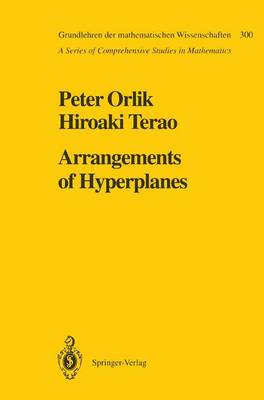Grundlehren der mathematischen Wissenschaften
1 primary work
Book 300
An arrangement of hyperplanes is a finite collection of
codimension one affine subspaces in a finite dimensional
vector space. Arrangements have emerged independently as
important objects in various fields of mathematics such as
combinatorics, braids, configuration spaces, representation
theory, reflection groups, singularity theory, and in
computer science and physics.
This book is the first comprehensive study of the subject.
It treats arrangements with methods from combinatorics,
algebra, algebraic geometry, topology, and group actions. It
emphasizes general techniques which illuminate the
connections among the different aspects of the subject. Its
main purpose is to lay the foundations of the theory.
Consequently, it is essentially self-contained and proofs
are provided. Nevertheless, there are several new results
here. In particular, many theorems that were previously
known only for central arrangements are proved here for the
first time in completegenerality.
The text provides the advanced graduate student entry into a
vital and active area of research. The working mathematician
will findthe book useful as a source of basic results of
the theory, open problems, and a comprehensive bibliography
of the subject.
codimension one affine subspaces in a finite dimensional
vector space. Arrangements have emerged independently as
important objects in various fields of mathematics such as
combinatorics, braids, configuration spaces, representation
theory, reflection groups, singularity theory, and in
computer science and physics.
This book is the first comprehensive study of the subject.
It treats arrangements with methods from combinatorics,
algebra, algebraic geometry, topology, and group actions. It
emphasizes general techniques which illuminate the
connections among the different aspects of the subject. Its
main purpose is to lay the foundations of the theory.
Consequently, it is essentially self-contained and proofs
are provided. Nevertheless, there are several new results
here. In particular, many theorems that were previously
known only for central arrangements are proved here for the
first time in completegenerality.
The text provides the advanced graduate student entry into a
vital and active area of research. The working mathematician
will findthe book useful as a source of basic results of
the theory, open problems, and a comprehensive bibliography
of the subject.
